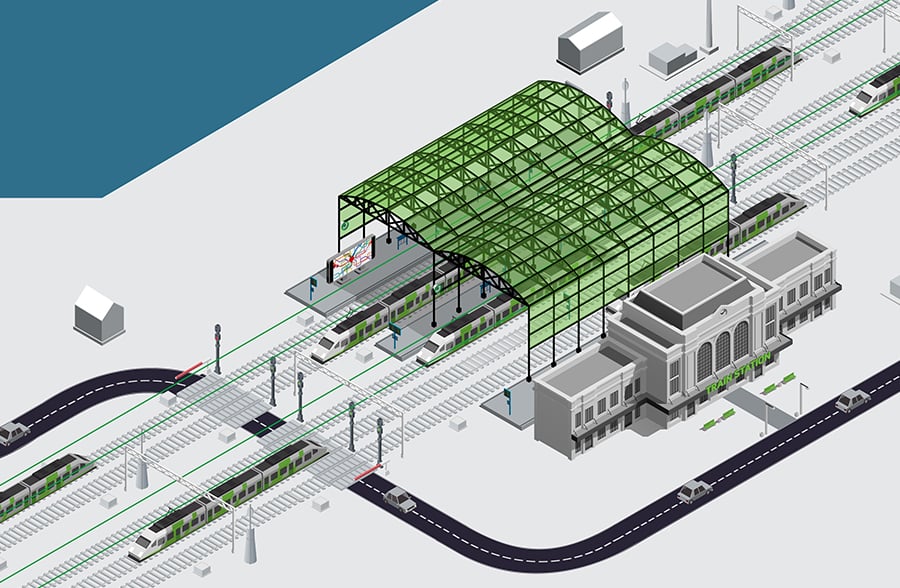Canadian Rail Industry Challenges and 7 Solutions
Canada’s extensive rail network, stretching from coast to coast, is a vital component of the nation’s transportation infrastructure. However, like any complex industry, the Canadian rail sector faces a range of challenges. In this blog, we’ll explore the key challenges confronting the Canadian rail industry and the innovative solutions that are being pursued to ensure its continued success.
- Aging Infrastructure: The Weight of Time
One of the most pressing challenges in the Canadian rail industry is the aging infrastructure. Much of Canada’s rail network was established over a century ago, and maintaining this extensive web of tracks, bridges, and tunnels is a monumental task. The challenge lies in finding the financial resources and logistical solutions to modernize and upgrade the aging infrastructure.
Solution: The industry is investing heavily in infrastructure improvements, including track upgrades, bridge repairs, and signal system modernization. These investments not only enhance safety but also increase the network’s capacity and efficiency.
- Safety Concerns: Upholding a High Standard
Safety is paramount in the rail industry, given the potential risks associated with transporting goods and passengers over long distances. Safety concerns range from derailments to level crossing accidents and the secure transport of hazardous materials.
Solution: Rigorous safety standards, advanced technology, and ongoing training for rail workers contribute to a culture of safety. Investments in safety measures, including track inspections and positive train control systems, help mitigate risks.
- Environmental Sustainability: The Green Challenge
As environmental concerns and climate change take center stage, the rail industry faces growing pressure to reduce its carbon footprint. The industry is challenged to find sustainable energy sources, decrease emissions, and implement eco-friendly practices.
Solution: Electrification of rail lines, adopting cleaner locomotives, and exploring alternative fuels are strategies aimed at reducing emissions. Efficient intermodal transportation and maximizing fuel efficiency also contribute to sustainability.
- Labor and Workforce Challenges: The Skills Gap
The rail industry is grappling with workforce challenges, including a shortage of skilled workers and an aging workforce. Recruiting and retaining talent in this competitive job market is a persistent struggle.
Solution: The industry is investing in workforce development programs, apprenticeships, and partnerships with educational institutions to address the skills gap. Attracting a new generation of rail professionals is essential to long-term success.
- Regulatory and Policy Changes: Navigating the Legal Landscape
The rail industry operates under a complex web of regulations and policies that can vary across regions and governments. Adapting to changes in government regulations and policies presents a challenge for rail operators.
Solution: Collaboration between industry stakeholders and governments helps ensure regulations align with industry needs and safety standards. Proactive engagement in the policy-making process is crucial.
- Market Competition: Battling for Freight
Railroads face competition from other transportation modes, such as trucking and shipping, for a share of the freight market. Meeting customer demands and maintaining competitiveness is an ongoing challenge.
Solution: The rail industry is diversifying its services, optimizing routes, and investing in technology to provide more efficient and cost-effective transportation solutions. Collaboration with other transportation modes can also enhance overall logistics.
- Indigenous Partnerships: Building Mutual Benefits
Partnerships with Indigenous communities offer opportunities for economic development and reconciliation, but they also present challenges related to land use, consultation, and balancing community interests.
Solution: Collaborative engagement and respectful dialogue with Indigenous communities are vital to finding mutually beneficial solutions. Negotiating land use agreements and addressing concerns through consultation and dialogue are key elements of these partnerships.
Navigating Challenges for a Bright Future
The Canadian rail industry’s ability to address these challenges and find innovative solutions is crucial to its continued success. With infrastructure investments, safety measures, environmental initiatives, workforce development, proactive engagement in policymaking, and strategic partnerships, the industry is poised to overcome these challenges and remain a vital part of Canada’s transportation network. The Canadian rail industry is on track to meet the demands of the future, ensuring the efficient movement of goods and passengers across the nation’s vast and diverse landscape.
About Live Assets | Leaders in Engineering Excellence | Greater Toronto Area
Live Assets is a premier engineering(rail/transit) agency dedicated to delivering excellence in engineering solutions across various industries.
Our agency is renowned for its expertise in engineering, and we take pride in our track record of delivering outstanding engineering projects with precision and innovation.
With a wide spectrum of clients spanning different industries, we cater to both permanent and contract engineering opportunities.
Discover more about our agency and stay updated on our latest developments through our social media channels:
